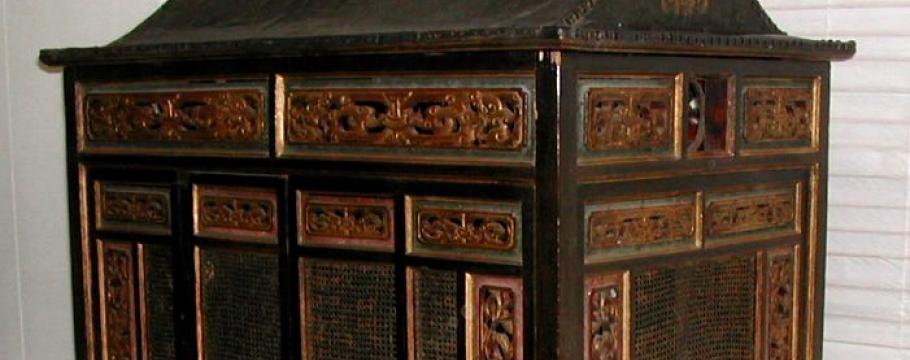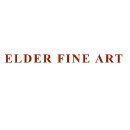


Transported to auction history
Author: Richard Brewster | Posted: 3rd June, 2014
A rare 1860s southern Chinese lacquered wood palanquin acquired several years ago from an old Tasmanian collection will be a major highlight of Philips Auctions forthcoming sale from noon Sunday June 15 at 47 Glenferrie Road, Malvern.
Palanquins were mainly used for transporting members of the aristocracy, protecting them from dust and dirt and hot and cold weather during their travels.
They came in two basic designs – those that were for use in an upright seated position and those in which the person could recline with his or her back resting against wall with legs extended or crossed.
The palanquin in Philips Auctions sale is small but of the reclining type, meaning it was most likely built for a child or young lady of a wealthy 19th century mandarin family.
The vendor declined to be named, but lived and worked in Asia for more than 20 years and claims it is the first palanquin he has seen in real life and outside book illustrations.
“Neither the National Palace Museum in Taipei or the Hong Kong Museum of History have a palanquin in their collections, and I am not aware of any in mainland China collections,” he said.
The leather top of this palanquin is decorated at each end with a gold-painted double gourd, an emblem associated with the deity Li Tiegui – said to be the most ancient and popular of the Eight Immortals of the Taoist pantheon, benevolent to the oppressed and needy.
The side panels are carved/decorated with vases holding flowers, a common motif of which there are many permutations.
Among its several interpretations is that it represents one of the eight Buddhist symbols of good fortune. However, in this case it is not necessarily related to Buddhism and may be just a popular decorative motif.
According to Ms Anna Wu, Assistant Curator of Asian Art, Victoria & Albert Museum, London, it also could be rebus for ‘peace’, a play on words.
It looks like the vases contain roses, and in this case the word vase (ping in Chinese) sounds like the word for peace (also ping).
Roses (meigui, also called yuegui) is a pun for season (siji), so the general meaning is to have ‘peace throughout the four seasons’.
The auction contains an American collection of Biedermeier-style furniture with ormolu mounts and quality myrtle and Madagascar veneers.
Auction goers will be enthused by the magnificent silver items from Paul Storr and Hester Bateman, a Queen Anne Britannia silver sifter dating from 1702 and silver cutlery services from WMF and Christofle, a family that shot to prominence in silverware manufacture during the early to mid-1800s.
Among the art on offer is a painting (Norfolk scene) by English artist John Crome (1768-1821), famous for his landscapes.
Crome founded the Norwich School of landscape painters and his works are represented in the Tate Gallery, the Royal Academy London, the Ashmolean Museum at Oxford, the Fitzwilliam Gallery in Cambridge and the National Gallery of Victoria.
In the following Monday night’s jewellery sale a major attraction is a gold pocket watch, compass and family photos once belonging to geologist Professor Griffith Taylor (1880-1963), a surviving member of British explorer Robert Scott’s ill-fated 1910-1913 Terra Nova Expedition to Antarctica.





